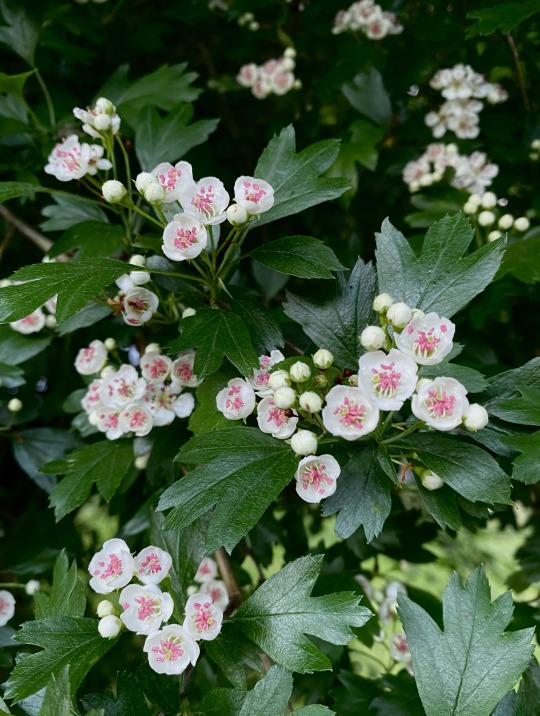#crataegus monogyna
Text
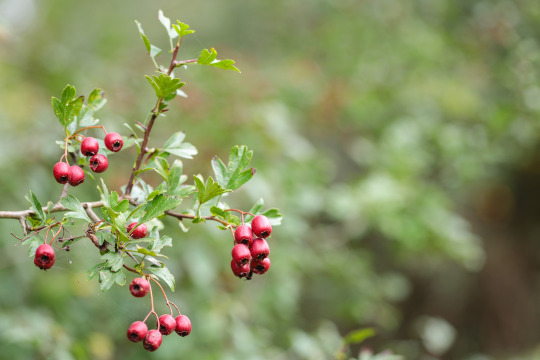
Hawthorn Pomes
Vibrant red pomes on a hawthorn branch, adding a splash of colour amongst the trees in Glapthorn Cow Pastures.
#autumn#autumnwatch#berries#berry#canon#canonuk#crataegus monogyna#flora#glapthorn#glapthorn cow pastures#hawthorn#nature#nature reserve#northamptonshire#northants#outdoors#plant#plants#pome#pomes#wildlife trust#wildlife trusts#woodland#woods
8 notes
·
View notes
Text
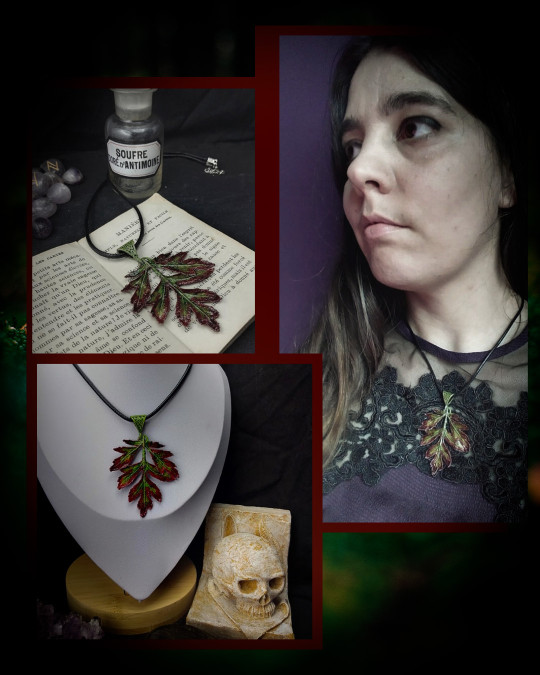
{{VENDU}}
Ƈʀǟȶǟɛɢʊֆ ʍօռօɢʏռǟ ƲƗƗƗ
Ɦɛʀɮǟʀɨʊʍ : Aubépine (Crataegus Monogyna)
ʟɨɛʊ ɖɛ Ƈʊɛɨʟʟɛȶȶɛ : Maison Loye (Bourgogne)
#the crypt and the incubus#witch jewelry#electroformed jewelry#botanical jewelry#pendentif#crataegus monogyna#aubépine
2 notes
·
View notes
Photo
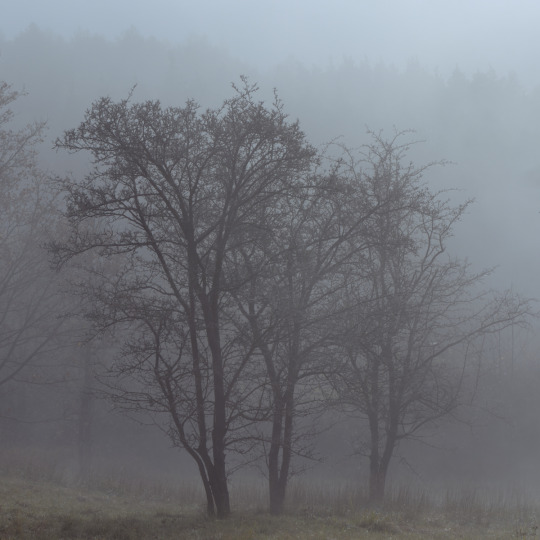
#photographers on tumblr#original photographers#landscape#trees#mist#fog#mysterious#creepy#hawthorns#common hawthorn#hloh jednosemenný#crataegus monogyna#prokop valley nature reserve#přírodní rezervace prokopské údolí
6 notes
·
View notes
Text
Hawthorn
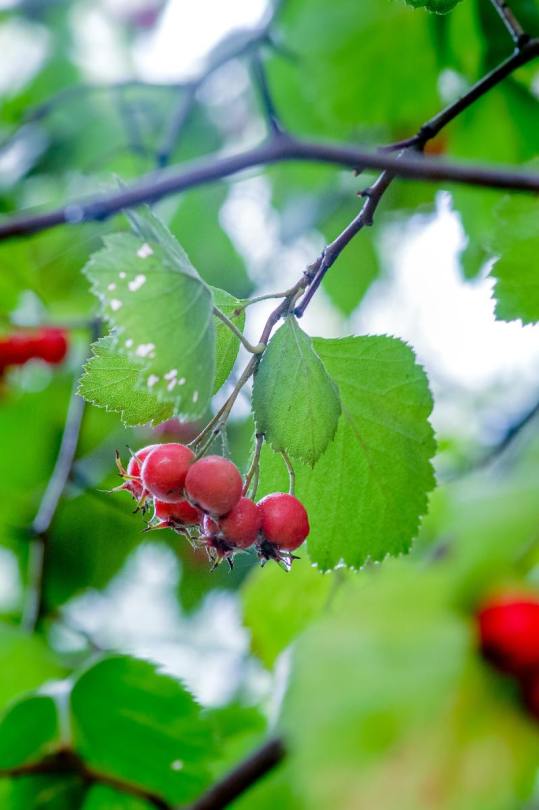
View On WordPress
0 notes
Text

0 notes
Text
herbal teas guide —
🌿🍃 having conversations with my mutuals all over the world, i was stunned to find out that not every country/culture practices drinking herbal teas for health issues. as a slavic person i decided to create this little guide because – and i'm saying this as a skeptical person who hates superstitions – they really work. 🌿🍃
mint tea (mentha piperita) is for digestion and relaxation
chamomile tea (matricaria chamomilla) is for digestive system
horsetail tea (equisetum arvense) is for skin, hair, nails condition, remineralization and circulatory system
linden tea (tilia cordata) is for a cold
lemon balm tea (melissa officinalis) is for relaxation and sleep
nettle tea (uritca dioica) is for urinary tract
sage tea (salvia officinalis) is for when your throat or teeth hurt
fennel tea (funiculum vulgare) is for digestive system
white mulberry tea (morus alba) is for carbohydrate metabolism
pansy tea (viola tricolor) is for clean skin and body detox
purge tea (cistus incanus) is for immunity
hawthorn tea (crataegus monogyna) is for heart and circulatory system
damian leaves tea (turnera diffusa) is for anxiety and libido
dandelion tea (taraxacum officinale) is for liver, stomach and digestion
st john's wort tea (hypericum perforatum) is for emotional balance, good mood, digestive system and kidney function
🌿🍃 to create this guide i was using a booklet from my pharmacy store. if you google them, you will find out that each of these have even more usage methods than the ones listed. 🍃🌿
🌿🍃 if you're from a different country/culture and you know more herbal teas like these, feel free to add them. 🍃🌿
#felt extra this evening but ive been planning to make it for a few weeks now#posted by me#slavic#polish#poland#herbs#herbal#organic#health and wellness#tea#guide
148 notes
·
View notes
Text
Moth of the Week
Peppered Moth
Biston betularia

The peppered moth is a part of the family geometridae. It was first described in 1758 by Charles Linnaeus. This moth gains its name from its speckled coloration, which has been studied as an example of natural selection and population evolution.
Description This species has a short body with narrow forewings. The body and wings are the same white base peppered with black dots and irregular black lines. This speckled pattern may vary with some moths having very few spots and others having so many that they look as if they are black with white spots as opposed to white with black. In rare cases, the black on the wings and body is replaced with gray or brown and in even rarer cases the spots are a combination of brown and black/gray. These spots help the moth camouflage against lichen on trees.
The evolution of this moth had been studied extensively during the last two hundred years, which created the term “industrial melanism.” During the Industrial Revolution, air pollution killed off lichen and covered trees in soot. This caused moths with a black spots on white base (typica) coloration to lose their camouflage and die off due to predators. This caused a spike in population for moths with a darker coloration (carbonaria) because they had the camouflage advantage. Once environmental conditions improved, the lighter colored moths once again became the dominant coloration.
The male’s antennae are bipectinate, meaning it has two rows of rami going down either side of a singular flagellum.
Wingspan Range: 45 - 62 mm (≈1.77 - 2.44 in)
Diet and Habitat The caterpillar of this moth eats many trees, shrubs, and small plants such as Blackthorn (Prunus spinosa), Hawthorn (Crataegus monogyna), Downy (Betula pubescens) and Silver Birch (Betula pendula), limes, sallows, poplars, oaks, Sweet Chestnut (Castanae sativa), Beech (Fagus sylvatica), Bramble (Rubus fruiticosus), Broom (Cytisus scoparius), Black Currant (Ribes nigrum) and Hop (Humulus lupulus).
They have a wide range, being found in China (Heilongjiang, Jilin, Inner Mongolia, Beijing, Hebei, Shanxi, Shandong, Henan, Shaanxi, Ningxia, Gansu, Qinghai, Xinjiang, Fujian, Sichuan, Yunnan, Tibet), Russia, Mongolia, Japan, North Korea, South Korea, Nepal, Kazakhstan, Kyrgyzstan, Turkmenistan, Georgia, Azerbaijan, Armenia, Europe and North America. They prefer habitats of woodland, scrub, hedgerows, parks and gardens.
Mating Depending on its location, this moth can have one or two generations per year. In Great Britain and Ireland, the peppered moth has one generation per year, whilst in south-eastern North America it has two generations per year. They emerge from the pupea in late May to August.
The females attract males with pheromones, which are carried by the wind. Males follow the concentration gradient to find the female. The male guards the female from other males until she lays the eggs. The female lays about 2,000 pale-green ovoid eggs about 1 mm in length into crevices in bark with her ovipositor.
Predators This species is a night-flying moth, making the vulnerable to bats. The males in particular fly every night to search for a female while females fly only the first night.
To protect themselves from birds during the day, this species rests on lichen covered trees to camouflage themselves.
The day time resting positions of this moth have been recorded and studied. This study shows that the peppered moth prefers resting spots that are covered such as below where the trunk and a branch meet, the underside of branches, and leafy twigs.
Additionally, the study found peppered moths with a lighter coloration (typica) blend in better against crustose lichens rather than foliose lichens because birds can see ultraviolet light. The peppered moth reflects UV light while crustose lichens don’t, making them easier to pick out.
Fun Fact The caterpillars of the peppered moth resemble things in both color and size. An experiment published in 2019 done on the caterpillars of the peppered moth showed that the larva (even when blindfolded) could sense the color of the tree they live on and change their body color to match and/or would move to a different twig that was closest in color to their own body.
(Source: Wikipedia, Butterfly Conservation, Max Planck Institute)
#Biston betularia#libraryofmoths#animals#bugs#facts#insects#moth#lepidoptera#mothoftheweek#Geometridae#peppered moth
85 notes
·
View notes
Text
English Folk/Traditional Names for Common Plants & Herbs

These are known now as folk names, but back in the medieval era and well into the 18th century, these were the common names for some of the herbs and plants in use in witchcraft (and generally!) today.
This list is not an exhaustive one; the names given here are just some of the names that were used primarily in England for common plants within the region.These plants have other unique and wonderful names in many other cultures and languages throughout the world.
✧ ADDER’S TONGUE (Ophioglossum Vulgatum)
A.K.A.: English Adder’s Tongue, Snake’s Tongue, Viper’s Tongue, Serpent’s Tongue, Adder’s Spear, Christ’s Spear.
✧ AGRIMONY (Agrimonia Eupatoria)
A.K.A.: Harvest Lice, Cat’s Tail, Liverwort, Sticklewort, Stickwort, Stickweed, Fairy’s Wand, Church Steeples, Aaron’s Rod, Beggar’s Lice/Ticks.
✧ ALDER (Alnus Glutinosa)
A.K.A.: Black Alder, Fever Bush, Owler.
✧ ANGELICA (Angelica Archangelica)
A.K.A.: Holy Ghost/Root of the Holy Ghost, St. Michael’s flower, Angel’s Food.
✧ ANISE (Pimpinella Anisum)
A.K.A.: Sweet Alice, Aniseed.
✧ APPLE (Malus)
A.K.A.: Fruit of the Gods, Fruit of the Underworld, Silver Branch, Silver Bough.
✧ ASH (Fraxinus Excelsior)
A.K.A.: Bird’s Tongue, Hampshire Weed, Widow-maker, Venus of the Woods, Husbandman’s tree.
✧ BALSAM (Commiphora Opolbalsamum)
A.K.A.: Balsam of Gilead, Balm Tree, Mecca Myrrh.
✧ BASIL (Oscimum Basilicum)
A.K.A.: Our Herb, St. Joseph’s Wort, Witches’ Herb, King of Herbs, Holy Basil.
✧ BAY (Laurus Nobilis)
A.K.A.: Bay Laurel, True Laurel, Daphne, Noble Laurel.
✧ BERGAMOT (Monarda Didyma)
A.K.A.: Horsebalm, Bee Balm, Scarlet Mondara.
✧ BIRCH (Betula Pendula)
A.K.A.: Silver Birch, White Birch, Lady of the Woods.
✧ BITTERSWEET (Solanum Dulcamara)
A.K.A.: Woody Nightshade, Felon-wort, Felonwood, Blue Nightshade, Fever Twig, Staff Vine, Violet Bloom.
✧ BLACKBERRY (Rubus Fruticosus)
A.K.A.: Bramble, Fingerberry, Blackhide, Blackbutter, Thimbleberrym Brambleberry, Gouthead.
✧ BLUEBELL (Hyacinthoides Non Scrupta)
A.K.A.: Nodding Squill, Auld Man’s Bell, Ring-o-bells, Wood Bells.
✧ BROOM (Cytisus Scoparius)
A.K.A.: Besom, Irish Tops, Scotch Broom, Butcher’s Broom, Sweet Broom.
✧ BURDOCK (Arctium Lappa)
A.K.A.: Thorny Burr, Beggar’s Buttons, Sticky Bobs, Love Leaves, Hare Burr.
✧ CARNATION (Dianthus Caryophyllus)
A.K.A.: Gilliflower, July Flower, Clove Pink, Sops-in-wine.
✧ CHAMOMILE (Anthemis Nobilis)
A.K.A.: Whig Plant, Chamomel, Earth/Ground Apple,
✧ CHESTNUT [SWEET] (Castanea Sativa)
A.K.A.: Marion, Jupiter’s Nut.
✧ CHICKWEED (Stellaria Media)
A.K.A.: Starweed, Adder’s Mouth, Scarweed/wort, Tongue Grass, Stitchwort, White Bird’s Eye, Little Star Lady.
✧ CHICORY (Cichorium Intybus)
A.K.A.: Witloof, Blue Sailors, Coffeeweed.
✧ CLARY [WILD] (Salvia Verbenaca)
A.K.A.: Christ’s Eye, Wild Clear-eye, Vervain Sage, Eyeseed.
✧ CLEAVERS (Galium Aparine)
A.K.A.: Catchweed, Beggar Lice, Goose Grass, Sticky Willy, Bedstraw, Robin-run-the-hedge, Goose’s Hair, Hedge-burrs, Milk Sweet, Stick-a-back, Scratchweed, Barweed.
✧ COMFREY (Symphytum Officinale)
A.K.A.: Knitbone, Slippery Root, Blackwort, Bruisewort, Ass Ear.
✧ DAISY (Bellis Perennis)
A.K.A.: Day’s Eye, Poet’s Darling, Bachelor’s Buttons, Bairnwort, Billy Buttons, Boneflower, Margaret’s Herb.
✧ DANDELION (Taraxacum Officinale)
A.K.A.: Swine’s Snout, Blowball, Puffball, Clockflower, Tell-the-time, Priest’s Crown, Lion’s Tooth.
✧ DEADLY NIGHTSHADE (Atropa Belladonna)
A.K.A.: Belladonna, Banewort, Black-cherry, Devil’s Cherries, Naughty Man’s Cherries, Devil’s Herb.
✧ FEVERFEW (Tanacetum Parthenium)
A.K.A.: Featherfew, Featherfoil, Midsummer Daisy, Nosebleed.
✧ FOXGLOVE (Digitalis Purpurea)
A.K.A.: Fairy Gloves/Fingers/Petticoats/Thimbles/Weed, Witches’ Glove, Witches’ Bells, Our Lady’s Glove, Dead Men’s Bells.
✧ GARLIC (Allium Sativum)
A.K.A.: Poor Man’s Treacle, Stinkweed, Camphor of the Gods.
✧ GOLDENROD (Solidago Vibgaurea)
A.K.A.: Aaron’s Rod, Cast the Spear.
✧ HAWTHORN (Crataegus Monogyna)
A.K.A.: May Blossom, Mayflower, Whitethorn, Hagthorn, Ladies’ Meat.
✧ HELLEBORE [BLACK] (Helleborus Niger)
A.K.A.: Bear’s Foot, Setter-wort/grass.
✧ HEMLOCK (Conium Maculatum)
A.K.A.: Poison Hemlock, Devil’s Porridge.
✧ HENBANE (Hysoscyamus Niger)
A.K.A.: Hog Bean, Stinking Nightshade, Henbell, Devil’s Eye, Witches’ Herb, Devil’s Tobacco.
✧ HOLLY (Ibex Auifolium)
A.K.A.: Bat’s Wings, Holy Tree, Christ’s Thorn.
✧ HONEYSUCKLE (Lonicera Periclymenum)
A.K.A.: Woodbind, Fairy Trumpets, Sweet Suckle, Honeybind.
✧ HOREHOUND [BLACK] (Ballota Nigra)
A.K.A.: Madwort, Black Hoarhound, Black Archangel.
✧ HOREHOUND [WHITE] (Marrubium Vulgare)
A.K.A.: Bull’s Blood, White Archangel, Eye of the Star, Houndbane, Devil’s Eye.
✧ IVY (Hedera Helix)
A.K.A.: Gort, Bindwood, Lovestone.
✧ JUNIPER (Juniperus Communis)
A.K.A.: Bastard Killer, Gin Berry.
✧ LADY’S MANTLE (Alchemilla Vulgaris)
A.K.A.: Our Lady’s Mantle, Lion’s Foot, Bear’s Foot, Nine Hooks.
✧ LAVENDER (Lavendula Angustifolia)
A.K.A.: Elf Leaf, Spikenard, True Lavender.
✧ LEMON BALM (Melissa Officinalis)
A.K.A.: Sweet Melissa, Bee Balm, Sweet Balm.
✧ LEMON VERBENA (Aloysia Triphylla)
A.K.A.: Lemon Louisa, Lemon Beebrush.
✧ LILY OF THE VALLEY (Convallaria Majalis)
A.K.A.: May Lily, Our Lady’s Tears, Mary’s Tears, Ladder to Heaven.
✧ MALLOW (Malva Sylvestris)
A.K.A.: Cheese-cake, Pick-cheese, Round Dock, Wild Mallow, Wood Mallow.
✧ MANDRAKE (Mandragora Officinarum)
A.K.A.: Satan’s Apple, Love Plant, Mandragora.
✧ MARIGOLD (Calendula Officinalis)
A.K.A.: Bride of the Sun, Drunkard, Husbandman’s Dial, Mary Gold, Summer’s Bride.
✧ MARJORAM (Origanum Majorana)
A.K.A.: Wintersweet, Joy of the Mountain, Mountain Mint.
✧ MEADOWSWEET (Filipendula Ulmaria)
A.K.A.: Bridewort, Queen of the Meadows, Little Queen, Quaker Lady, Mead Sweet, Gravel Root.
✧ MINT [PEPPERMINT] (Mentha Piperita)
A.K.A.: Brandy Mint, English Mint.
✧ MINT [SPEARMINT] (Mentha Spicata)
A.K.A.: Garden Mint, Hart Mint, Our Lady’s Mint, Sage of Bethlehem.
✧ MISTLETOE (Viscum Coloratum)
A.K.A.: Druid’s Herb, Witches’ Broom, Wood of the Cross, Golden Bough, Devil’s Fuge.
✧ MONKSHOOD (Aconitum Napellus)
A.K.A.: Monk’s Blood, Blue Wolf’s-bane, Aconite, Women’s Bane, Devil’s Helmet, Friar’s Cap.
✧ MUGWORT (Artemisia Vulgaris)
A.K.A.: Lion’s Tail, Lion’s Tart, Heart-wort.
✧ MULLEIN (Verbascum Thapsus)
A.K.A.: Blanket/Velvet/Woolly Mullein, Our Lady’s Blanket, Beggar’s Blanket, Aaron’s Rod, Adam’s Rod, Jupiter’s Staff, Jacob’s Staff, Peter’s Staff, Virgin Mary’s Candle, Lady’s Foxglove, Graveyard Dust.
✧ NETTLE (Urtica Dioica)
A.K.A.: Stinging Nettle, Burn Weed, Burn Hazel.
✧ PARLSEY (Petroselinum Crispum)
A.K.A.: Devil’s Oatmeal, Persil.
✧ PENNYROYAL (Mentha Legium)
A.K.A.: Royal Thyme, Run-by-the-ground, Lurk-in-the-ditch, Pudding Grass.
✧ ROSEMARY (Rosemarinus Officinalis)
A.K.A.: Dew of the Sea, Sea Dew, Elf Leaf, Guardrobe, Rose of Mary.
✧ RUE (Ruta Graveolens)
A.K.A.: Herb of Grace, Herb of Repentance, Mother of Herbs.
✧ [CLARY] SAGE (Salvia Sclarea)
A.K.A.: Clear-Eye, See-bright, Eyebright.
✧ ST. JOHN’S WORT (Hypericum Perforatum)
A.K.A.: Scare-devil, Balm of the Warrior’s Wound, Rose of Sharon.
✧ SORREL (Rumex Acetose)
A.K.A.: Green Sauce, Sour Sauce, Cuckoo Sorrow.
✧ SWEET WOODRUFF (Galium Odoratum)
A.K.A.: Wild Baby’s Breath, Master of the Woods, Ladies in the Hay.
✧ TANSY (Tanacetum Vuulgare)
A.K.A.: Bitter Buttons, Golden Buttons, Cow Bitter.
✧ TARRAGON (Artemisia Dracunculus)
A.K.A.: Dragon’s Wort, Little Dragon.
✧ THISTLE [BLESSED] (Cnicus Benedictus)
A.K.A.: Holy Thistle.
✧ THISTLE [MILK] (Silybum Marianum)
A.K.A.: Our Lady’s Thistle, Saint Mary’s Thistle, Sow Thistle, Marian Thistle.
✧ VALERIAN (Valeriana Officinalis)
A.K.A.: Garden Heliotrope, St. George’s Herb, Bloody Butcher, Cat’s Valerian, Vandal Root.
✧ VERVAIN (Verbena Officinalis)
A.K.A.: Herb of Grace, Enchanter’s Herb, Britannica, Juno’s Tears, Divine Wood, Pigeongrass,
✧ WITCH HAZEL (Hamamelis Virginiana)
A.K.A.: Spotted Alder, Winterbloom, Snapping Hazelnut.
✧ WORMWOOD (Artemisia Absinthium)
A.K.A.: Absinthe, Crown for a King, Green Ginger.
✧ YARROW (Achillea Millefolium)
A.K.A.: Woundwort, Nose-Bleed, Thousand-Leaf, Arrowroot, Carpenter’s Weed, Devil’s Plaything, Devil’s Nettle,
Sources, References and Cross-Checks: Breverton's Complete Herbal (Terry Breverton), Encyclopedia of Magical Herbs (Scott Cunningham), Medieval Plant Names and Their Modern Corollaries (The Met Cloister).
If you like my content and would like to help me keep providing free stuff for my gorgeous Ghoul Gang, you can tip your witch here: [Paypal].
699 notes
·
View notes
Text
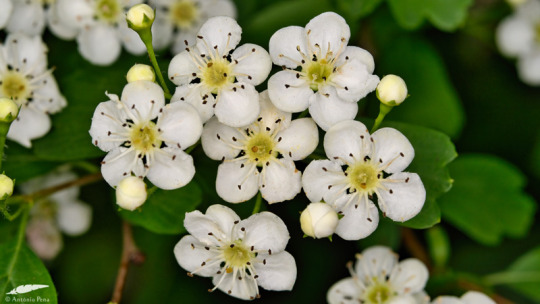

Common Hawthorn - Pilriteiro (Crataegus monogyna)
Lisboa/Portugal (16/03/2024)
[Nikon D850; AF 105mm Micro-Nikkor F2,8 with Circular Flash Nissin MF 18; F18 and F20; 1/250s; 400 ISO]
15 notes
·
View notes
Note
Clanmew warrior cats oc name translation time again? Yes.
Coalfrost- Kitchiki (hot coal-frost)
Dewlight- Pesooane (dew-ray of light). I chose ane over shayu because Dewlight was named for being optimistic and outgoing, kind of like a ray of sunshine... or a ray of light!
Eveningcloud- Piarrwifha (evening-thin cloud). Went for thin cloud over fat cloud because Eveningcloud is chill but not in a lazy way, more in a they kinda vaguely don't care way.
Foxcloud- Aowaohai (fox-fat cloud). Now THIS is a fat cloud cat. Chill but because they're lazy lol.
Falconscreech- Yassganyaolr (raptor-yowling) No word for falcon, so just used raptor! For screech, I was torn between screaming and yowling, but I chose yowling since it gives more of the this cat is really loud vibes.
Fireflydawn- Ahaigioochawhaf (glow-bug-dawn). In the absence of a word for firefly, i figured combining glow and bug would do.
Heatherbounce- Ssnibpipip (heather-bouncing). I picked the present tense mostly because she is always in action haha.
Maplestream- Hwooqshush (field maple-stream). Making use of the new word for maple here!
Moorstride- Kiyyrpaohao (grass-travelling). Struggled to translate this one, but it's where i ended up!
Softsnap- Wuffgnamna (soft fur-biting). Chose bite over snap just because in the absence of the alliteration, bite has more, well, bite to it.
Sparrowchirp- Qeeyanaya (sparrow-singing). No word for chirp, so I figured singing would do well enough.
Spiderbite- Skegnamnag (cobspider-bit)
Weaselsight- Byrrirpipo (weasel-sight)
Hydrangeadawn- Meyfuhawhaf (violet-dawn). No word for Hydrangea so I picked an approximation.
Pinefoot- Nyyp'pwyyar (pine needle-foot)
Songspeckle- Errarriwoowoo (song thrush-spotting). Chose the bird over song itself because I think that's fun.
Swanstep- Hchomssappap (swan-walked)
Tideshred- Saossassrapssen (current-shredded). No word for tide, figured current was the closest thing.
First submission to use the new Maple word award! I appreciate the use of thin-cloud for Eveningcloud, fat-cloud is the popular choice so it's nice to see the underdog get love lmao
Words for you;
Peregrine Falcon (Falco peregrinus) = Pree
Eurasian Hobby (Falco subbuteo) = Yowpiu
Moor = Hwayao
NOT JUST A GRASSLAND. This is the equivalent of "Forest" to "Woods." When Clan cats say "moorland" they are referring to an entire biome, encompassing heaths, grasslands, tors, and dales.
Heath = Afwa
The "woods" to moorland "forest." This is a particular parcel of the moorland, an area with acidic soil that needs to be managed through fire or grazing, lest it success into sparse woodland.
Chirp/Note/Beat (Word is used interchangeably) = Bwi
The same Clanmew terms for various songs are used for birdsongs. A Bwi is a single beat of the larger song of a bird, or just one word in a speech. When combined with another Bwi, you have a Tune. Put Tunes together and you have a song.
Hawthorn (Crataegus monogyna) = Arke
Clan cats don't have hydrangeas, so I went and found a plant that looks a lot like them! Hawthorns have fluffy clusters of flowers and grow with big, strong, thorned bushes. Feel free to translate as 'haw' or 'hydrangea,' however you'd like. If you want to keep the 'exotic' feel of a domestic plant, feel free to play around with the words for domestic rose, or fuschia.
25 notes
·
View notes
Video
Autumn Hawthorn by Oliver Andrews
Via Flickr:
Sunlight bringing out the autumn colours in a hawthorn leaf at Glapthorn Cow Pastures.
#autumn#autumn colours#autumnwatch#canon#canonuk#crataegus monogyna#flora#glapthorn#glapthorn cow pastures#hawthorn#leaf#leaves#nature#nature reserve#northamptonshire#northants#outdoors#plant#plants#tree#trees#wildlife trust#wildlife trusts#wood#woodland#woods#Peterborough#England#United Kingdom#flickr
1 note
·
View note
Text

{{VENDU}}
Ƈʀǟȶǟɛɢʊֆ Ƈǟʀʍɨռǟ
Ɦɛʀɮǟʀɨʊʍ : Aubépine (Crataegus Monogyna)
ʟǟքɨɖǟʀɨʊʍ : Quartz Hématoïde
ʟɨɛʊ ɖɛ Ƈʊɛɨʟʟɛȶȶɛ : forêt de la Planoise (Bourgogne)
#the crypt and the incubus#witch jewelry#electroformed jewelry#botanical jewelry#boucles d'oreilles#crataegus monogyna#aubépine#quartz hematoide
2 notes
·
View notes
Note
Hey, can you do a peaky blinder headcannon where the reader is the second youngest shelby but is really close with John shelby so she is basically John and esmes daughter. She's always around them and won't leave their side. They are both so protective of her as she's always happy and kind. She's really close with esme and she looks up to her like a mother figure and esme looks at her like a daughter.
Second Youngest Shelby Headcanons
I hope you like these and I am really sorry these took really long to make.

Before Season 1
Your birth month flower are Hawthorn (Crataegus monogyna) and Lily of the Valley (Convallaria majalis) flowers.
You prefer to spend time with John out of all of your older brothers. There wasn't many moments in your life that you spent without him.
Your nickname means little mouse as you are that much smaller in terms of height.
Despite your small stature you have a fiery spirit and a rather strong personality. Refusing to let anyone push you around.
You have a special bond with John Shelby, he was there for you for everything and when he went to war in World War I, you were devastated. You wrote him letters every week, and his replies were your lifeline.
You often found comfort in the company of Esme, who became like a mother figure to you. She saw you as a daughter and cherished the bond you shared.

Season 1
You noticed the way your older brother John is now acting differently. The first world war affected him in ways you could not fathom or begin to imagine. The way you heard about his trouble sleeping made you more alert and aware of it.
You made it your personal mission and priority to remain at his side, offering him comfort and support whenever he asked or needed it. Often staying up late into the night with him and falling asleep on the couch making sure he had company.
John appreciated your presence more than anything during those difficult times. He found solace in your unwavering support and kindness. You were like a ray of sunshine in his life, always bringing a smile to his face.
John appreciated your presence more than anything during those difficult times. He found solace in your unwavering support and kindness. You were like a ray of sunshine in his life, always smiling. Your personality remains bright as he remembered it.
You two would go on long walks to help clear his mind, you two rarely spoke during these walks because you felt like words were not needed as the silence between the two of you spoke louder than words ever could.
The chaos, danger surrounding the Shelby name and family, John wanted to make sure you and Finn were safe no matter what happened. Always keeping a watchful eye on the both of you. Even after he got married to Esme.

Season 2
As the family's troubles intensified, you became protective of both John and Esme as their troubles worsened. In spite of the fact that you are younger than Ada, you are also older than Finn Shelby. In addition to that, you are also the second youngest Shelby. Since you could not bear the thought of losing anyone else in your family, you made it your mission to ensure their safety as well. There was always someone at their side, accompanying them wherever they went and keeping an eye out for any potential threats along the way.
You found solace and a sense of purpose in the study of philosophy. It became an outlet for your introspection and a way to make sense of the chaotic world around you. You delved deep into philosophical concepts and theories, often engaging in intellectual discussions with John and Esme, who admired your thirst for knowledge.
You developed a close bond with Esme, viewing her as not only a mother figure but also a mentor. She recognized your intellectual curiosity and encouraged your pursuit of knowledge. Together, you would spend hours discussing philosophy, literature, and various other subjects that intrigued you. Esme's guidance and wisdom shaped your perspective on life and helped you navigate the complexities of the world.
Despite not wanting part of the family's business, you were often dragged into it just because of the last name Shelby.
You made it clear that you didn't want to be directly involved in the illegal activities of the Shelby family. Instead, you focused on using your intellect and strategic thinking to assist John and Esme from behind the scenes. Your ability to analyze situations and provide insightful perspectives became invaluable to them in their dealings. "I don't want someone else's blood on my hands Tommy," You told him. You already couldn't stand the sight of someone else's blood and her own, so you made it a personal boundary to avoid direct involvement in violence.
You learned hand-to-hand combat even though you couldn't stand the sight of someone else's blood or your own. It triggered more of a gag reflex, you know the importance of self-defence she just didn't think she would need to learn it until things got a lot more riskier.
You saw Esme as a mother figure, as you grew older and she saw you as the daughter she never had.
Esme taught you invaluable life skills like cooking, sewing, managing household affairs and handling finances. She wanted to make sure you were armed with the necessary skills to navigate the world as you grew up.
Despite your aversion to violence, you developed a sharp intuition when it came to reading people and assessing dangerous situations. Your keen observational skills and ability to gauge people's intentions proved valuable sometimes. Much like Polly's ability to read the future or at least predict it. She had a rather strong Intuition.

Season 3
Your Intuition became more refined as you grew up, the constant danger, shifting alliances forced you to develop a heightened sense of awareness and knack for predicting potential threats.
The studies kept her from nearly most of the family meetings as you delved deeper into them. "You for a fact know that I can't go those meetings, I have to study as much as I can." You said to Thomas, John, Arthur and Polly.
While you were busy with your studies, you also helped out when it comes to John and Esme's children. Always making time to help them out.
Despite the busy schedule, you made it a point to spend more time with them and helping them out. From cooking to cleaning and babysitting the children.
5. The major family meetings were now the only ones you would attend, the only ones you be found attending and it was usually Thomas breaking the news to you on the day, John would tell you the day before.
Season 4
John's death was traumatizing, it deeply affected you, losing your closest brother was devastating blow, it shattered the sense of security you always had beside you.
One of the Changretta mafia blinded her with the use of a acidic liquid, causing her to lose her sight permanently, your wails were from the women's bathroom one night after John's death.
Tommy was furious when this happened, "I can't see Tommy. How can I continue my studies if I can't see?"

#peaky blinders#Peaky Blinders#BBC Peaky Blinders#Peaky Blinders Headcanons#John Shelby#Thomas Shelby#Tommy Shelby#BBC Peaky Blinders Headcanons#Headcanons#Younger Sister Shelby Headcanons#Shelby Headcanons#John Shelby & Young Sibling Shelby Headcanons
36 notes
·
View notes
Text


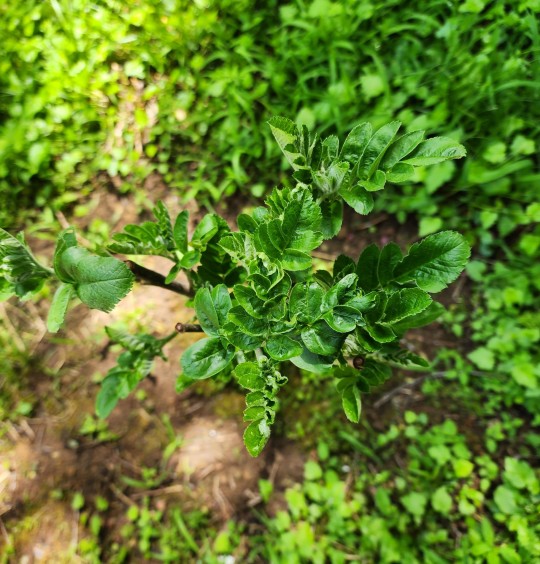

The Rowthorn: A Very Rare and Special Tree
Not too long ago, I began working with an extremely unique tree that I have since become pacted to, and I have finally been given leave to share about it publicly. It's a tree so unusual that it technically bares no common name and, instead, only has a couple of cultivar names and an undecided scientific name. The tree in question is one I have been calling a Rowthorn, since it is a cross between a Rowan Tree (Sorbus Acuparia) and a Hawthorn Tree (Crataegus Monogyna.) The resultant Crataegosorbus (or Sorbocrataegus, depending on your source) is a hybrid developed by Russian horticulturist Ivan Michurin in the 1920s, and can be phenotypically described as a nobbled Rowan tree with berries that look like rosy Haws the size of cherries. Miraculously, these Rowthorn berries are generally considered better for eating and cooking than either Rowan berries or Hawthorn berries are.
This tree is special to me for a couple reasons. On one hand, my grandfather was a botanist who specifically worked creating fruit tree hybrids in his day, which gives me a strange sort of ancestral connection to a tree born through human efforts. On the other hand, both Hawthorns and Rowans are quite historically and personally significant to my practice. Hawthorns possess ancient ties to the Otherworld and its denizens, and can serve to mark "thin places" where the realms are less experientially distinct from one another. As such, the Fae are often said to congregate at the sites of old Whitethorn trees. On the other hand, Rowans are also beloved by the Fae, who are said to enjoy dancing beneath their holy boughs—though, harvested wood from the tree can be utilized in a protective capacity against them as well. This ability of Rowan to both delight and repell the Fae is, in turn, closley aligned with my work as a Faerie Physicker. As such, a tree like the Rowthorn—which embodies the virtues of both these magical plants—is one I couldn't pass up the opportunity to know better, and so I invested in one the instant I was lucky enough to come across it.
Watching it grow from a bare and miniscule scion into a slowly flourishing sapling has been beautiful, and I can hardly wait for the day that it bares its first fruits.
52 notes
·
View notes
Text
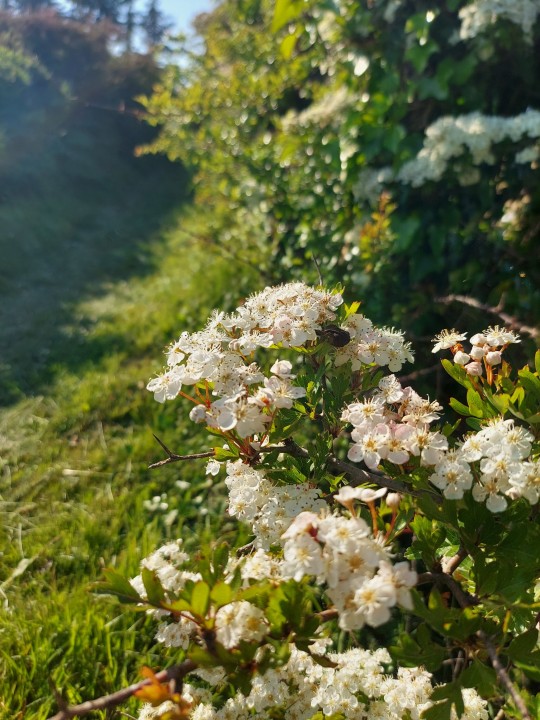
Fun fact! Common hawthorn (Crataegus monogyna) is a flowering tree that is actually part of the rose family. Examples of famous common hawthorn trees include the apocryphal oldest tree in France, and a well-known hawthorn in England that stood out for flowering three times a year.
#cottagecore#nature#light academia#romanticism#romantic academia#flowers aesthetic#flowercore#warmcore#summer aesthetic#flora and fauna#flower facts
17 notes
·
View notes
